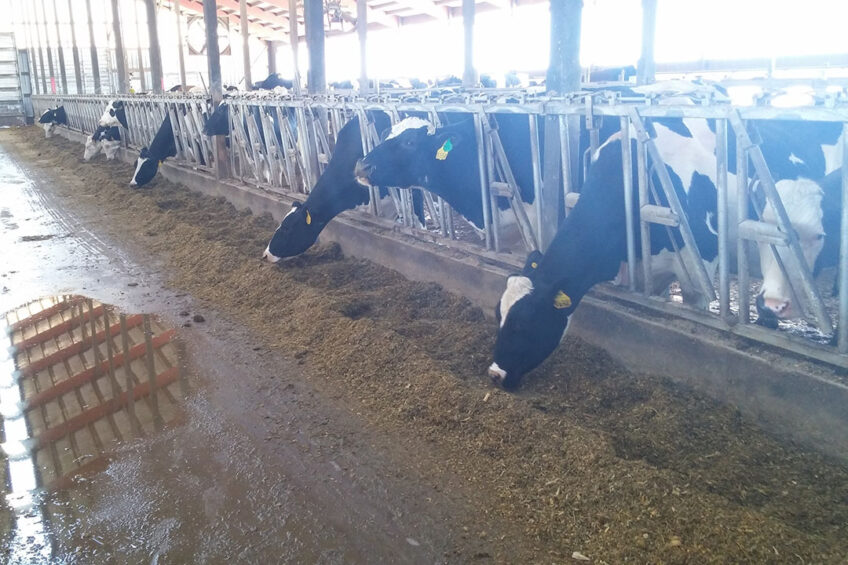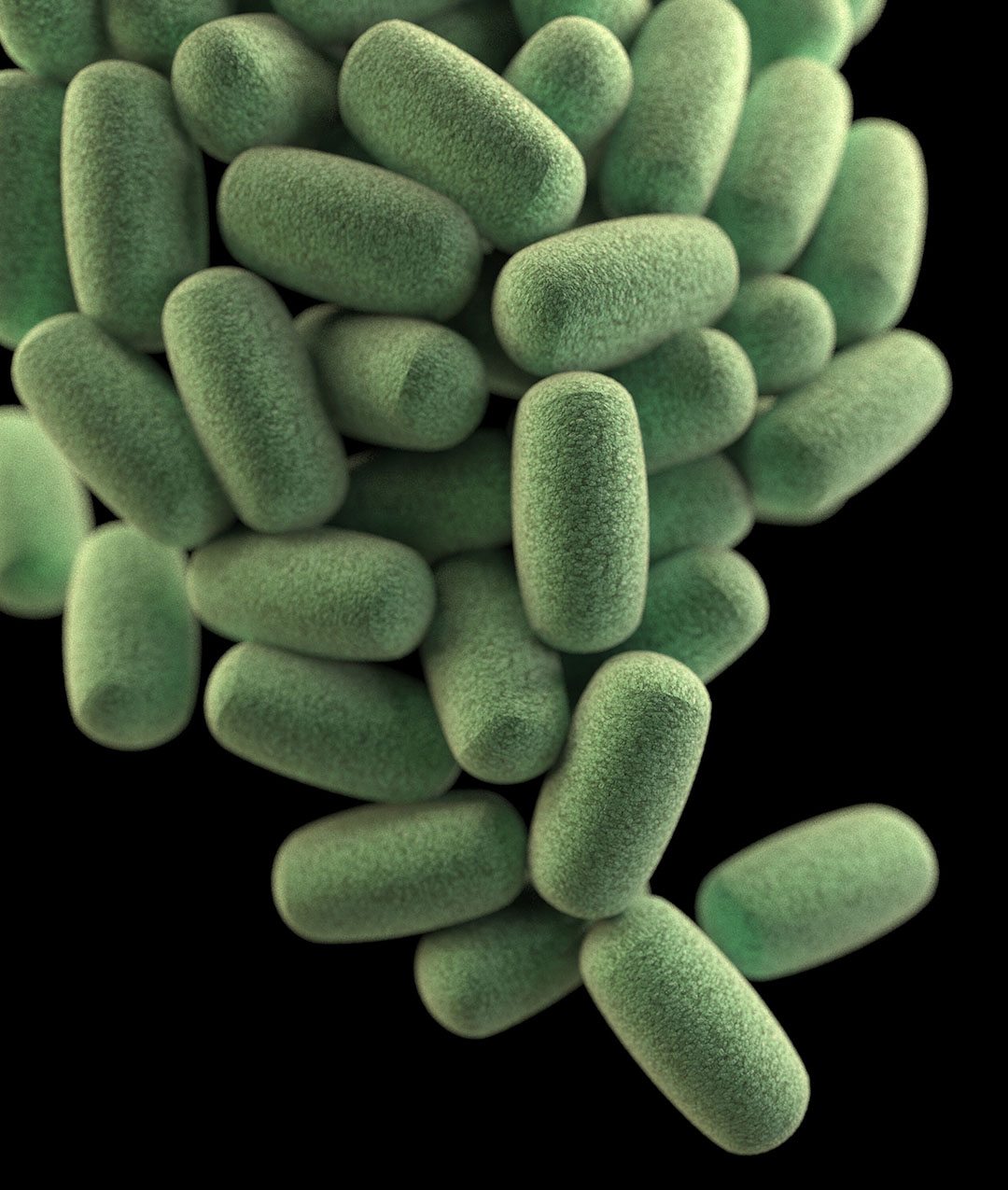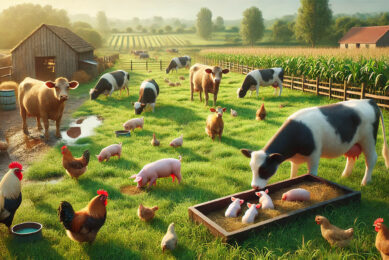Battling clostridium in the dairy cow

Clostridia bacteria negatively affect gut health in dairy cows in several ways, including causing lethal hemorrhagic bowel syndrome (HBS). However, ensuring ‘feed hygiene’ and the use of probiotics can go a long way to mitigating these effects.
Part of the Gut Health 2022 Special
“HBS jumped on the scene in the US about 25 years ago,” says Clayton Stoffel, Technical Service Manager at North American feed firm Papillon Agricultural Company. Stoffel also earned his master’s degree from the University of Wisconsin-Madison. “There was a rash of sudden deaths with clots in the intestines in the late 90’s, and incidence has stayed relatively level since. HBS is cyclical, and tends to increase when the environment favours bacterial growth or altered feed intake, including heavy rain and heat.”
HBS has been linked to proliferation of C. perfringens in the dairy cow intestine. There are also a few other Clostridium species such as C. beijerinckii and C. bifermentans which Stoffel says can also be found in feed; intake of this feed can limit the growth of rumen bacteria and in turn, lower milk production. Papillon Ag has partnered with research firm Church & Dwight on 2 nation-wide dairy farm bacteria survey studies in recent years. The latest one in 2021 confirmed there is a wide range of diversity of clostridia species across the US and that regional populations can shift over time.

Feed hygiene
As dairy farmers and nutritionists have improved their practices over time, they have dealt effectively with many of the ‘big issues’ that were holding back higher milk production rates. Now, attention is being turned towards fine-tuning of farming practices, says Stoffel, such as better management of clostridia, which can make a difference now that the ‘big issues’ are out of the way.
Each farmer must consider where on their farm that feed can be contaminated with clostridia. “The weak link could be a number of different things,” Stoffel explains. “In general, steps should be taken to prevent dirty or spoiled feed or manure runoff getting into the feed alley. Producers should also strive to keep soil and manure out of the feed bunker in the first place by taking greater care when harvesting.” Cleaning out their TMR mixer and other feed handling equipment often can also help reduce clostridial loads, he adds.
Hygiene is important because clostridia are soil-borne and ubiquitous on the farm. They can be spread on crops through irrigating with muddy water, through a range of crop harvest practices, and through not ensiling feed on clean pads with proper drainage, among other ways. Cattle will always be consuming some of these bacteria and while farmers should minimise that, targeted probiotics should be considered.
Probiotics – how they work
As explained recently by a team of scientists in Thailand, providing Bacillus bacteria as a feed additive for livestock can enhance immune system function. Probiotic bacteria have antagonistic effects which prevent or reduce infection with pathogenic bacteria the through production of antimicrobial compounds, “including lipopeptides, surfactin, bacteriocins and bacteriocin-like inhibitory substances…The antagonistic activities of probiotics also include the production of organic acids that lower pH and competitive exclusion of pathogens.”
These scientists also note that some Bacillus species have functional properties that could promote animal health and welfare. For example, some produce enzymes that assist in livestock nutrient absorption and have other characteristics that can help relieve oxidative stress.
Stoffel explains that while no probiotic will eliminate clostridia from a dairy cow’s system, they can help reduce populations and reduce risk of serious effects should a cow happen to consume some feed with a high clostridia load. “To choose the right probiotic species it’s important to know what harmful bacteria you are present on the farm,” he says. “Then you have a clear target and can select an effective probiotic backed by quality assurance. A multi-component product is better than products with only one species or strain, in this case products that layer together 2 or 3 probiotic bacteria that will outcompete the Clostridium species present, with a strain of Bacillus which supports immune system function.”
Farm analysis programme
Church & Dwight has a farm sampling and analysis programme to help provide specific probiotics for combating clostridia on a regional and individual farm basis. Over 880 dairy farms in 33 states have been sampled. Ongoing follow-up monitoring helps achieve long-term success in shifting a farm’s bacterial populations away from those that are harmful.
“For farms with HBS challenges, the ROI is more than 4:1 based on the reduction of replacement costs due to decreased death loss and the increase in milk,” explains former Church & Dwight R&D Director and current consultant Dr Tom Rehberger. “For farms with clostridial challenges that are not HBS, the ROI is 2:1 to 3:1 based on the milk response when feeding the Bacillus. Milk increase has ranged from 2 to over 5 lbs/cow/day and is likely variable due to polymicrobial and multifactorial challenges.”
Rehberger says interest continues to be high once the programme is introduced, especially on farms with HBS where there is no other method that can quickly stop the C. perfringens associated with this syndrome. “However, it has been harder to convince farms that are experiencing mild to moderate digestive issues to initiate the sampling process necessary to select the best Bacillus strains to address their microbial challenges,” he says. He believes lower costs and informing more veterinarians about this approach would increase its use.
Stoffel adds that more dairy farmers are looking to probiotics every year, especially with increased pressure to reduce antibiotic use, and the phase out of BST antibiotics 5 years ago. “As milk production goes up, farmers are looking for ways to prophylactically protect their cows from minor feed challenges,” he says. “But you have to be patient. Probiotics are not an overnight solution. It takes a couple of weeks to start seeing results.”
References are available on request.
Join 13,000+ subscribers
Subscribe to our newsletter to stay updated about all the need-to-know content in the dairy sector, two times a week.






